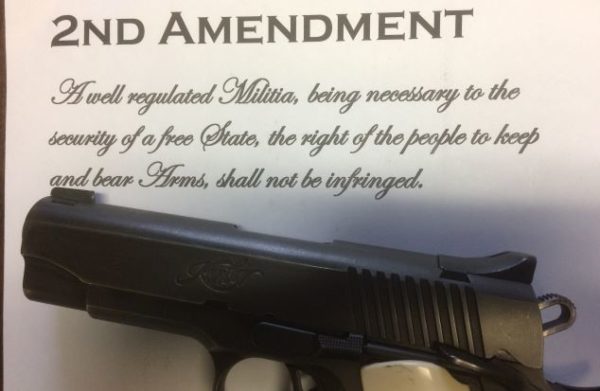
As the Supreme Court of the United States prepares for oral arguments in what could result in another landmark Second Amendment ruling further defining and potentially expanding on the fundamental, individual right to keep and bear arms, watch for an increasing number of analysis pieces which may, or may not, offer subtle or not-so-subtle arguments about what the Amendment allows, and what it does not.
It has already started, actually, and each report will likely be read and picked apart as partisans on both sides await the outcome. The case is New York State Rifle & Pistol Association v. Bruen. NYSR&PA is an affiliate of both the National Rifle Association and the Citizens Committee for the Right to Keep and Bear Arms. Both organizations have submitted amicus briefs in the case, along with virtually every other gun rights organization on the landscape.
Writing at The Conversation, Assistant Law Prof. Eric Ruben at Southern Methodist University observes, without fear of contradiction, “The stakes in one of the most significant Second Amendment cases in U.S. history are high.”
Ruben further posits, “In my view as a Second Amendment scholar, this case is also noteworthy in that how the court reaches its conclusion could affect the Second Amendment analysis of all weapons laws in the future.”
It’s not just an arbitrary and restrictive—and regularly abused—New York law on the line, but similar laws in New Jersey, California, Maryland, Massachusetts, Hawaii, Rhode Island and Joe Biden’s Delaware, Ruben notes in his essay. This is why there is so much at stake, and if the high court hands down a ruling affirmative to the gun rights arguments, it will cause tremors if not temblors in gun control laws across the country.
A piece in The Gothamist by Joseph Gedeon discussing New York homicide data is part of this lead-up to the Nov. 3 oral arguments, even if people don’t think so. This is because it’s a New York gun control law on the line, and the argument will be made that the Empire State’s restrictions are necessary to keep the murder rate down.
Gedeon looks at the FBI Uniform Crime Report for 2020—a document that may seem rather user unfriendly—and observes, “The NYPD’s latest CompStat report has so far recorded 348 murders to date in 2021, down from 357 during the same period last year. The department recorded 462 murders for all of 2020. While the latest NYPD data has the murder rate dropping 2.5% this year so far, they are up nearly 46% since 2019.”
This comes as Politico’s Daniel Han and Katherine Landergan are reporting that anti-gun New Jersey Gov. Phil Murphy announced his intention for the Garden State to “enter a pact with… New York, Connecticut and Pennsylvania to share gun crime data across state lines.”
They note Murphy “campaigned in Burlington County to rally against gun violence. He was joined by gun control advocate Gabby Giffords, the former Arizona congresswoman who was severely wounded in an assassination attempt in 2011.”
Like other states, New Jersey has seen a spike in violent crime involving firearms, but the Politico story also acknowledges, “New Jersey already has very restrictive gun control laws on the books. By some measures, it’s second in the nation for strict gun control laws — something Murphy pointed out in Burlington. He hinted that passing a third gun control package would be a priority once the Legislature reconvenes in November.”
That seems to be the normal reaction from anti-gunners to gun control failure. Instead of acknowledging the law has not worked, they propose more restrictions.
But a Supreme Court ruling that drives a wooden stake through the heart of demonstrably-failed New Jersey gun restrictions will likely derail such an effort.
That is why all eyes will be on the high court Nov. 3, and again sometime in late June 2022 at the end of the court’s current term. That is traditionally when the most controversial rulings are handed down. It will be a very long eight months.